![]()
![]()
![]()
Use LEFT and RIGHT arrow keys to navigate between flashcards;
Use UP and DOWN arrow keys to flip the card;
H to show hint;
A reads text to speech;
24 Cards in this Set
- Front
- Back
|
P Waves Normal Duration: A. >0.10 B. >0.11 C. <0.12 D. >0.12 |
C. <0.12 sec |
|
|
QRS Complex Normal Duration: A. 0.08 - 0.20 B. 0.06 - 0.12 C. 0.04 - 0.20 D. 0.04 - 0.12 |
B. 0.06 - 0.12 Half the PR Interval |
|
|
QT Interval Normal Duration: A. 0.36 - 0.44 B. 0.20 - 0.60 C. 0.25 - 0.44 D. 0.20 - 0.25 |
A. 0.36 - 0.44 |
|
|
PR Interval Normal Duration: A. 0.11 - 0.12 seconds B. 0.12 - 0.24 seconds C. 0.20 - 0.12 seconds D. 0.12 - 0.20 seconds |
D. 0.12 - 0.20 seconds |
|
|
atrial depolarization = A. T Wave B. P Wave |
B. P Waves |
|
|
Ventricles depolarization = |
QRS Complex |
|
|
ventricular repolarization = |
T Wave |
|
|
time taken for electrical activity to move between Atria&Ventricles = |
PR Interval |
|
|
time between two QRS complexes = |
RR Interval |
|
|
____ Segment is an isoelectric line that represents the time between depolarization & repolarization of the ventricles (i.e. contraction). |
ST Segment |
|
|
It represents the time taken for the ventricles to depolarize & then repolarize |
QT Interval |
|
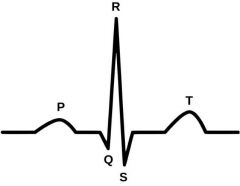
The ____ Interval is from the start of the P wave to the start of the Q wave. |
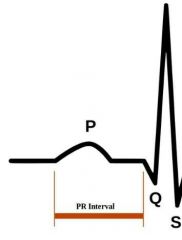
PR Interval |
|
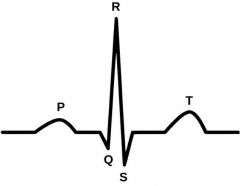
The ___ starts at the end of the S-wave & finishes at the start of the T wave A. SQ Segment B. ST Segment C. QRS Complex D. QT Complex
|
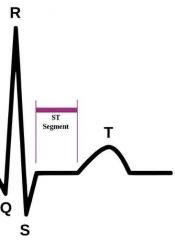
B. ST Segment |
|
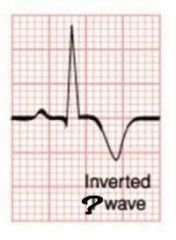
Inverted ___ Wave is suggestive of myocardial ischemia |
Inverted T Wave |
|
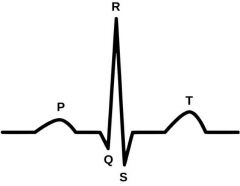
starts at the beginning of the QRS complex and finishes at the end of the T wave. |
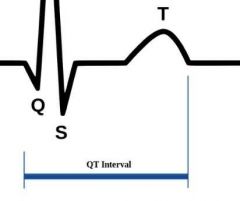
QT Interval
|
|

Abnormal ST Segment: More than 1-2 mm elevation of ST in two contiguous leads is suggestive of |
acute myocardial infarction (Ml) |
|
|
Abnormal PR Interval Longer than 0.20 seconds (5 small blocks) A. Junctional B. First Degree Block |
First Degree Block |
|

Abnormal ST Segment: ___ is suggestive of myocardial ischemia (lack of oxygen due to reduced blood flow to the tissue) |
ST Depression |
|
|
Abnormal PR Interval Less than 0.12 Seconds (3 small blocks) A. Junctional B. First Degree Block |
Junctional |
|
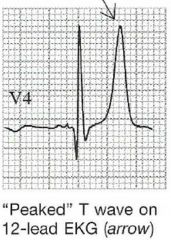
Peaked T Waves are suggestive of |
Hyperkalemia |
|
|
A prolonged QT indicates a lengthened refractory period (vulnerable period) which puts the ventricles at risk for life-threatening __ such as __ |
dysrhythmias Torsade's de Pointes |
|
|
___ starts at the peak of one R wave to the peak of the next R wave. |
The RR Interval |
|
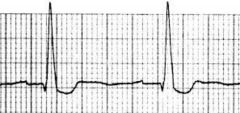
Abnormal ST Segment: (heart drug) causes depression (scoop) of the ST-referred to as a "dig dip" |
Digitalis dip |
|
|
2nd degree heart block occurs in two varieties: |
Type I (Wenckebach) Type II (Mobitz) |

